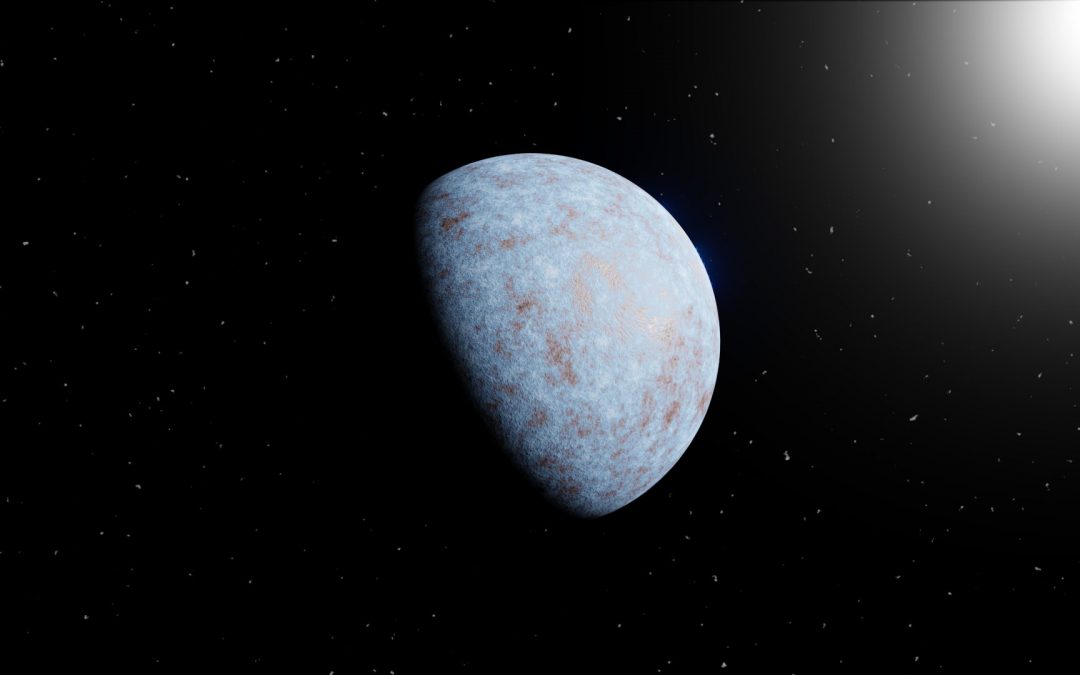Its name is Toi-1853b and it is extremely peculiar: every 30 hours it completes one complete revolution around its star (the Earth takes a year to complete one complete revolution around the Sun), it has a radius comparable to Neptune’s (3.5 Earth radii, hence the name) but a mass about four times larger (73 Earth masses). This gives it the record for the highest density among the Neptunian exoplanets known to date (about 10 g/cm3, twice the density of Earth). At a distance of 545 light years from us, Toi-1853b is located in the Boote constellation and its discovery, published today in Nature, was made by an international team of researchers, led by Luca Naponiello, a 31-year-old PhD student in astrophysics at the University of Rome Tor Vergata and first author of the paper. Several researchers from the Istituto Nazionale di Astrofisica (Inaf) made fundamental contributions to the study.
Toi-1853b is located in the so-called ‘Neptunian desert’, a near-stellar region in which no Neptune-sized planets are found: receiving strong radiation from the star, these planets cannot retain their evaporating gaseous atmospheres, leaving a solid core much smaller than Neptune’s exposed. “Based on theories of planetary formation and evolution, it was not expected that such a planet could exist and so close to its star”, Naponiello comments. “It is a planet with too high a density to be a classical Neptunian-type planet and, consequently, it must be extremely rich in heavy elements”. Its presence in the ‘Neptunian desert’ is, therefore, a further mystery to be clarified.
Its exact composition is not known. “We expect Toi-1853b to be predominantly rocky,” adds Naponiello, “and surrounded by a small gaseous envelope of hydrogen and helium that makes up at most 1 per cent of the planet’s mass. Or, another very fascinating hypothesis is that it could be composed of half rock and half water ice. Given the planet’s high temperature (about 1500 Kelvin), in the latter case Toi-1853b could have an atmosphere rich in water vapour”.
“Even its origin is a mystery since none of the theoretical models of planetary formation predicts that a planet with such characteristics could exist,” says Luigi Mancini, professor at the Physics Department of the University of Rome Tor Vergata and second author of the paper. “However,” Naponiello continues, “numerical simulations that we have conducted in extreme scenarios suggest that its origin may be due to collisions between massive protoplanets in the original proto-stellar disc. Such collisions may have removed almost all of the planet’s atmosphere, which would explain its small size and high density, as if only the planet’s bare core remained.”
As an alternative to the planetary collision scenario, the researchers believe that the planet might initially have been a gas giant like Jupiter or more massive, and would have assumed a very elliptical orbit as a result of dynamic instabilities due to gravitational interactions with other planets. This would have led it to make very close passes by its star, which would have caused it to lose its outer atmospheric layers and would, at the same time, have circularised and stabilised its orbit at its current distance from its star. “At the moment, we cannot distinguish which of the two formation scenarios is the more plausible one, but we will continue to observe this planet to find out. We also cannot exclude that subsequent theoretical studies, starting from this exceptional discovery, may lead to new formation models for very massive Neptunian planets”, Aldo Bonomo, a researcher at Inaf in Turin and co-author of the paper, comments.
Toi-1853b was initially identified in 2020 as a planetary candidate by Nasa’s Transiting Exoplanet Survey Satellite (Tess) using the transit method, i.e. by observing the periodic light decreases of its star produced by the planet’s passage in front of it. The confirmation of the planetary nature of Toi-1853b and the measurement of its mass and density were possible thanks to radial velocity spectroscopic observations obtained by the team with the Harps-N (High Accuracy Radial Velocity Planet Searcher for the Northern hemisphere) spectrograph at the Galileo National Telescope (Tng), located on the island of La Palma in the Canary Islands. These observations allowed the planet’s gravitational signal on the motion of its star to be revealed and characterised with high accuracy.
“Harps-N has now been operational at the Tng for more than 10 years (it obtained its first light in March 2012). It is one of the few state-of-the-art instruments available to the astronomical community to measure with high precision the masses and densities of extrasolar planets, in some cases even Earth-sized ones,” Alessandro Sozzetti, first researcher at Inaf in Turin and co-author of the article, concludes. “As in this case, new discoveries and measurements often bring more questions than answers.”
Source: Ufficio stampa INAF
Read more: “A super-massive Neptune-sized planet”, by Luca Naponiello, Luigi Mancini, Alessandro Sozzetti, Aldo S. Bonomo, Alessandro Morbidelli, Jingyao Dou, Li Zeng, Zoe M. Leinhardt, Katia Biazzo, Patricio E. Cubillos, Matteo Pinamonti, Daniele Locci, Antonio Maggio, Mario Damasso, Antonino F. Lanza, Jack J. Lissauer, Karen A. Collins, Philip J. Carter, Eric L. N. Jensen, Andrea Bignamini, Walter Boschin, Luke G. Bouma, David R. Ciardi, Rosario Cosentino, Silvano Desidera, Xavier Dumusque, Aldo F. M. Fiorenzano, Akihiko Fukui, Paolo Giacobbe, Crystal L. Gnilka, Adriano Ghedina, Gloria Guilluy, Avet Harutyunyan, Steve B. Howell, Jon M. Jenkins, Michael B. Lund, John F. Kielkopf, Katie V. Lester, Luca Malavolta, Andrew W. Mann, Rachel A. Matson, Elisabeth C. Matthews, Domenico Nardiello, Norio Narita, Emanuele Pace, Isabella Pagano, Enric Palle, Marco Pedani, Sara Seager, Joshua E. Schlieder, Richard P. Schwarz, Avi Shporer, Joseph D. Twicken, Joshua N. Winn, Carl Ziegler e Tiziano Zingales
